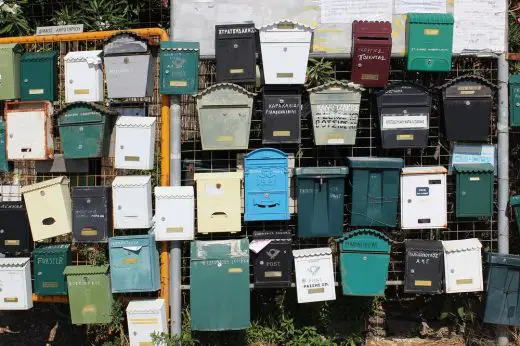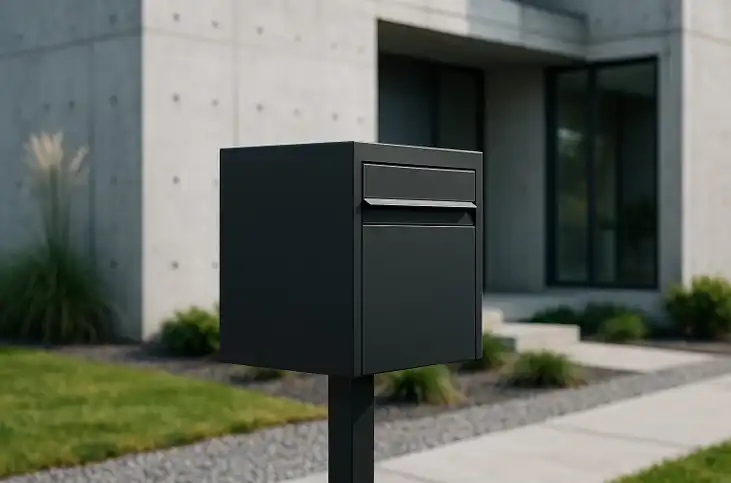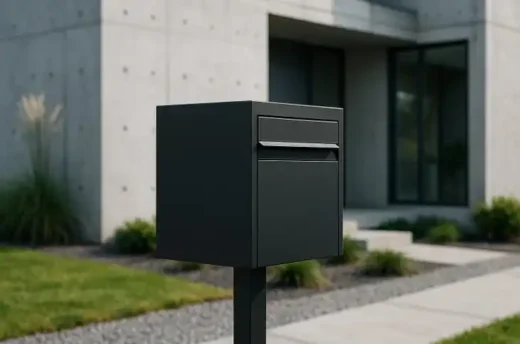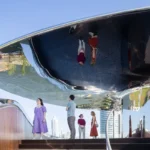Modern mailbox architectural style guide, Letterbox mail storage advice, Postal service
Modern Mailbox Architectural Style
2 July 2025
The Modern Mailbox: Where Function Meets Architectural Style
Once a purely utilitarian feature, the mailbox has evolved into a statement of both personal identity and architectural style. From sleek minimalist cubes in front of modernist homes to rustic wooden boxes attached to farm fences, today’s mailboxes are more than simple receptacles—they are small-scale sculptures that reflect the character of the spaces they serve.
In this article, we’ll explore how mailboxes have become integral to architectural design, the key considerations for choosing one, popular materials and styles, and how to integrate mailboxes into contemporary building projects.
More Than a Mail Slot: The Role of Mailboxes in Architecture
Mailboxes have long been viewed as standalone, practical accessories. However, contemporary architecture embraces them as extensions of the home or building’s identity. A well-designed mailbox can set the tone for the entire property. It serves as a visitor’s first tactile interaction, offering a physical and visual cue to the design sensibilities that lie beyond the front door.
For architects and designers, the mailbox represents a micro-opportunity to reinforce the building’s overall narrative. Whether embedded in a concrete wall, standing freely with a powder-coated steel post, or integrated into a smart home’s entry system, today’s mailboxes merge aesthetics with technology and durability.
Choosing the Right Mailbox: Design Meets Functionality
When selecting or designing a mailbox, a few key elements should guide the decision:
Material durability: Outdoor exposure demands materials that can withstand moisture, UV rays, and temperature fluctuations. Stainless steel, powder-coated metals, treated wood, and composite materials are all excellent choices.
Design cohesion: The mailbox should complement the building’s façade, landscape, and entryway. For example, a geometric metal mailbox works well with a minimalist or industrial structure, while a handcrafted cedar box may suit a Scandinavian or cottage-style home.
Security and smart features: With the rise of online shopping, parcel theft is a growing concern. Many contemporary designs include lockable compartments or even electronic access controls and sensors that notify homeowners when mail has arrived.
Installation type: Wall-mounted, post-mounted, and curbside mailboxes offer different advantages. In urban environments, wall-mounted options preserve space and are often integrated into the front façade. Suburban or rural designs typically favor freestanding styles.
Materials and Styles: From Classic to Cutting-Edge
The diversity of mailbox designs available today is staggering. Here are a few categories that architects and homeowners often gravitate toward:
Mid-century modern: Clean lines, bold colors, and retro typography define this style. Ideal for Eichler homes or other mid-century renovations.
Industrial and minimalist: Matte black finishes, sharp angles, and stainless steel create a streamlined, contemporary appearance.
Natural and organic: Wood, stone, or weathered metal finishes appeal to biophilic designs and environmentally conscious builds.
Custom fabricated: For high-end residences or commercial buildings, custom-designed mailboxes provide total design freedom, ensuring harmony with unique architectural language.
Each of these styles serves a different purpose, but all can elevate a simple object into a design statement.
To explore more design-forward mailbox solutions, this collection with a lot of Architectural Mailboxes offers a range of styles for both residential and commercial applications.
Integrating Mailboxes Into Contemporary Design Projects
Architects are increasingly incorporating mailbox considerations into early design phases. This integration ensures cohesion between the mailbox, entryway, fencing, and even landscaping. In multi-residence projects, shared mailbox systems can be designed as sculptural focal points in communal spaces or lobbies.
Sustainability is also becoming a consideration in mailbox design. Choosing recycled or locally sourced materials, minimizing maintenance, and ensuring long life cycles are part of a broader move toward sustainable architecture.
For commercial and mixed-use buildings, designers are blending functionality with branding. A well-designed mailbox cluster in a boutique hotel or co-working space, for example, can reinforce brand identity while serving practical needs.
For architectural insights and professional guidelines on integrating small design elements like mailboxes into the broader project vision, visit the American Institute of Architects (AIA).
Personalization: A Touch of Character
Modern mailbox design offers countless options for personalization—colors, finishes, engraved numbers, and even integrated lighting. These small details help homeowners express individuality while maintaining cohesion with architectural themes. A custom mailbox isn’t just functional; it’s a subtle yet effective way to reinforce a property’s visual identity from the curb.
The Rise of Smart Mailboxes
Smart mailboxes are revolutionizing mail security and convenience. Equipped with motion sensors, cameras, and app notifications, they offer peace of mind for online shoppers and busy homeowners. Integrated seamlessly into modern homes, these high-tech solutions are becoming a standard feature in contemporary architectural design.
Comments on this guide to Modern mailbox architectural style article are welcome.
Residential Property Articles
Contemporary Property Articles – architectural selection below:
Building Mailboxes
How Are Commercial Mailboxes Different

Comments / photos for the Modern mailbox architectural style advice page welcome






